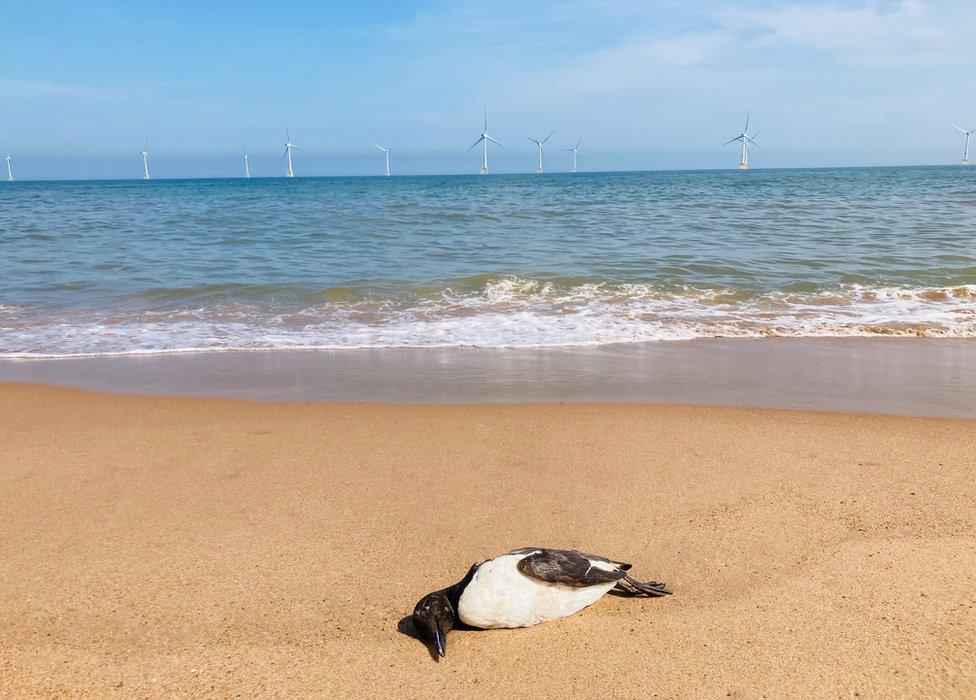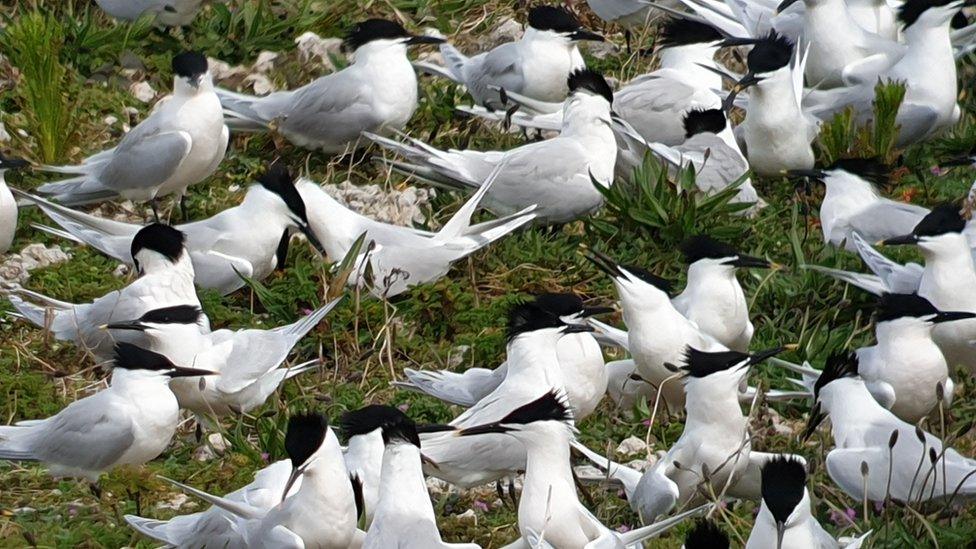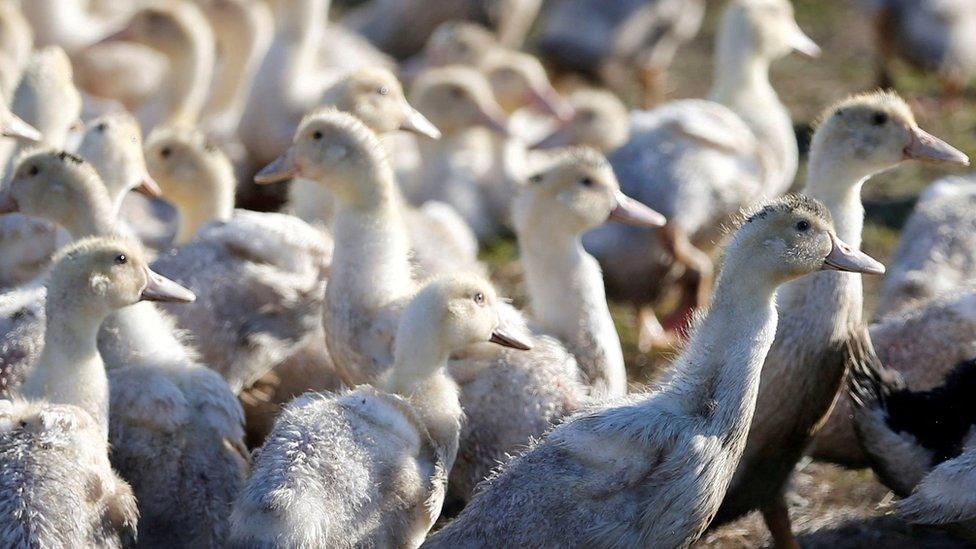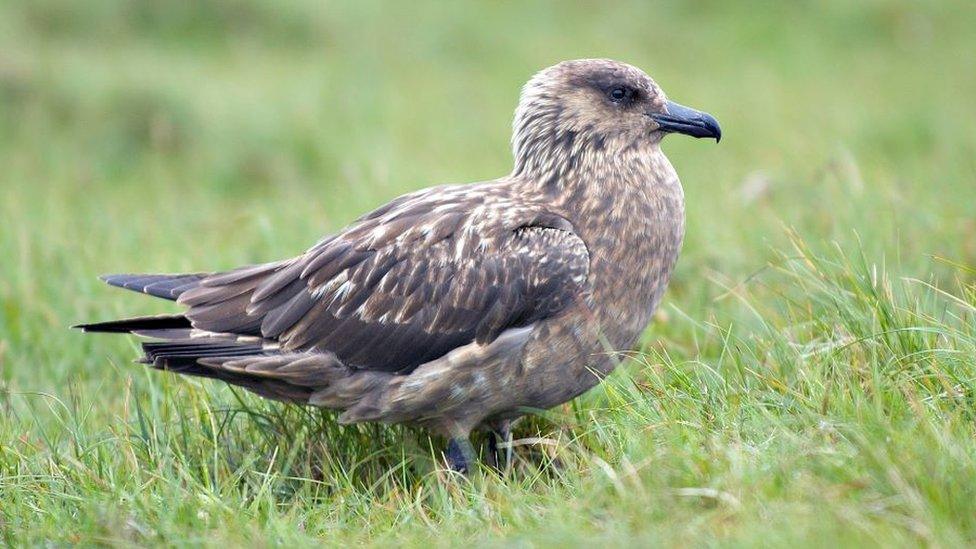Bird flu confirmed at premises near Fraserburgh and Kirkcudbright
- Published

NatureScot says it is receiving fewer reports of dead birds
New outbreaks of avian flu have been confirmed at premises in Aberdeenshire and Dumfries and Galloway.
Protection and surveillance measures have been put in place at two locations near Fraserburgh and one near Kirkcudbright, external.
However, environment agency NatureScot said it was now receiving fewer reports of dead birds.
The carcasses of thousands of dead seabirds have been removed from coastlines in recent weeks.
NatureScot said in a statement: "We are continuing to see dead birds, particularly kittiwakes, guillemots and herring gulls, reported on our east coast shores, although we have been receiving fewer reports since the final week of July.
"However, we are also now seeing small numbers of seabirds affected in other parts of Scotland."
The agency said a few dead auks had tested positive on the west coast, including a guillemot in Dumfries and Galloway and a puffin, a razorbill and two guillemot in Kintyre.
It is thought possible that the carcasses may have washed over from Rathlin Island in Northern Ireland, where avian flu has been suspected of hitting kittiwakes and guillemots.
Bird flu has now been confirmed in gulls on Canna and signs of the disease have been reported in gulls in Lewis and Harris and in Ullapool.
"Avian influenza has also been detected in the Northern Isles, with two Arctic terns testing positive in Shetland, but there are no reports of a widespread effect of avian flu on seabirds at this time in Shetland or Orkney," NatureScot said.
"Overall, there are now positive avian flu test results from regions including Aberdeenshire, the Highlands, East Lothian, Fife, Angus and Argyll.
"NatureScot and partners are continuing surveillance at key seabird sites and collecting samples for testing. Testing updates, external are posted by the Animal and Plant Health Agency.
The virus risk to human health is described as low.
Related topics
- Published10 July 2023

- Published26 June 2023

- Published28 June 2023

- Published16 June 2023
